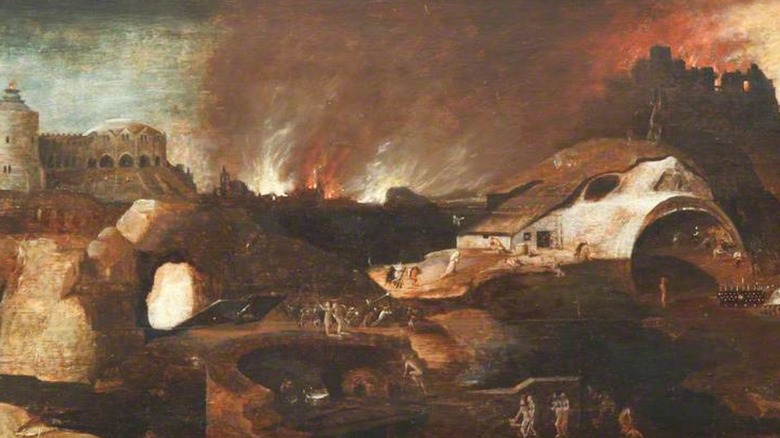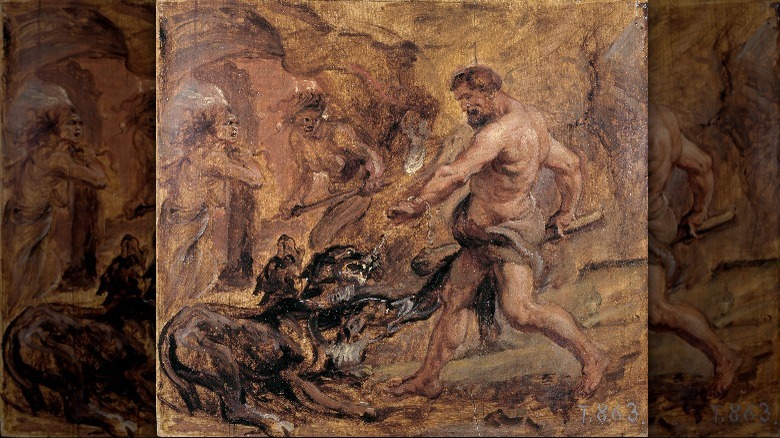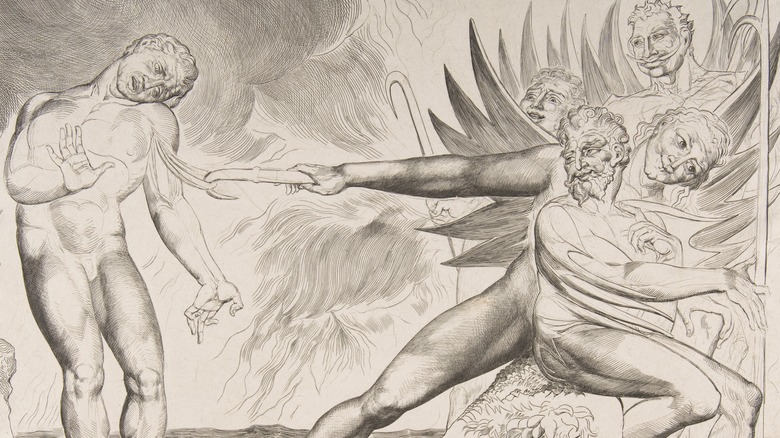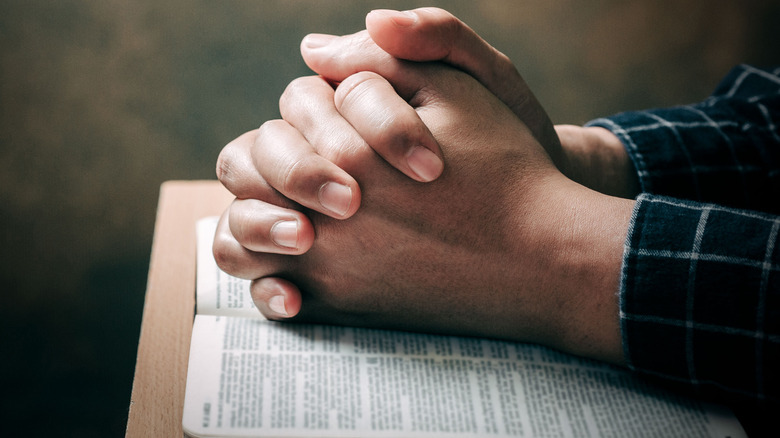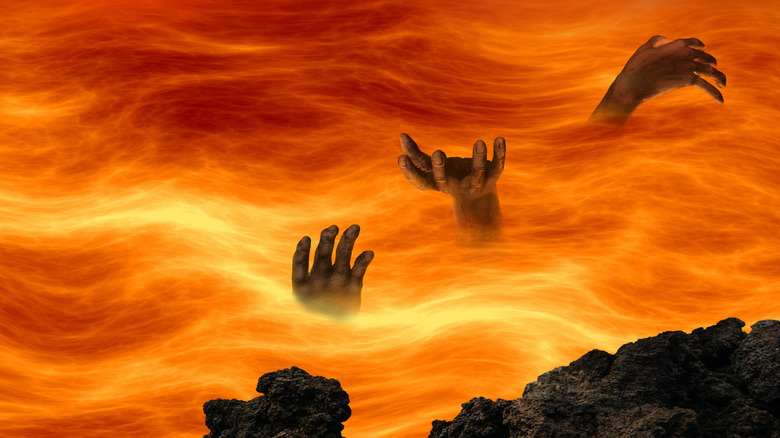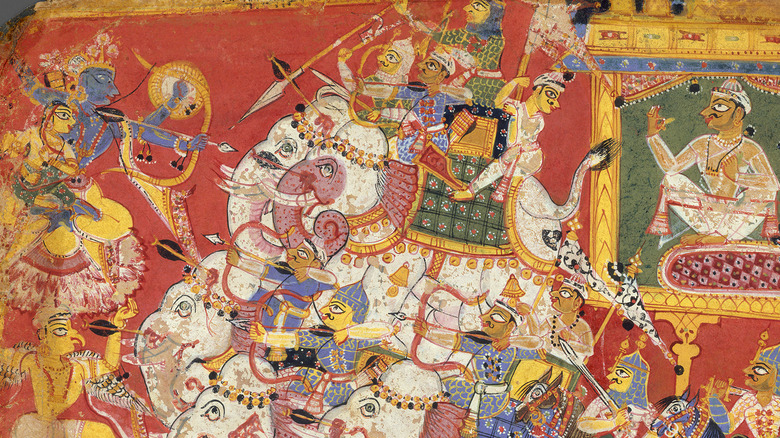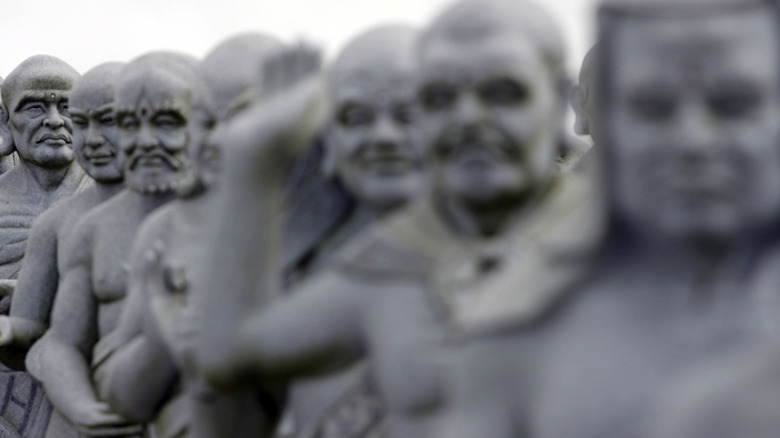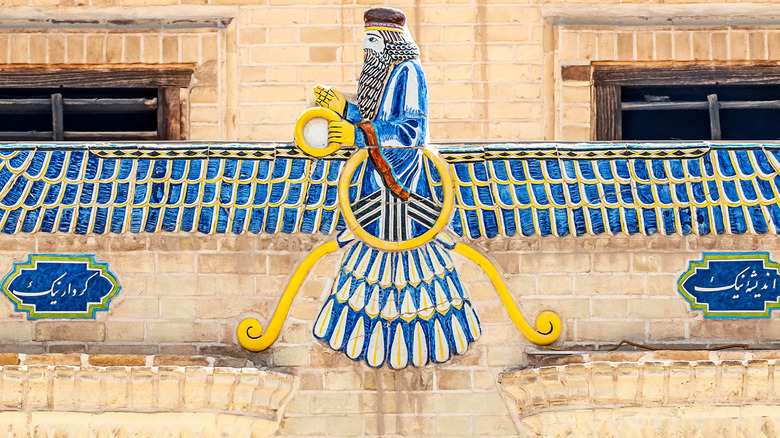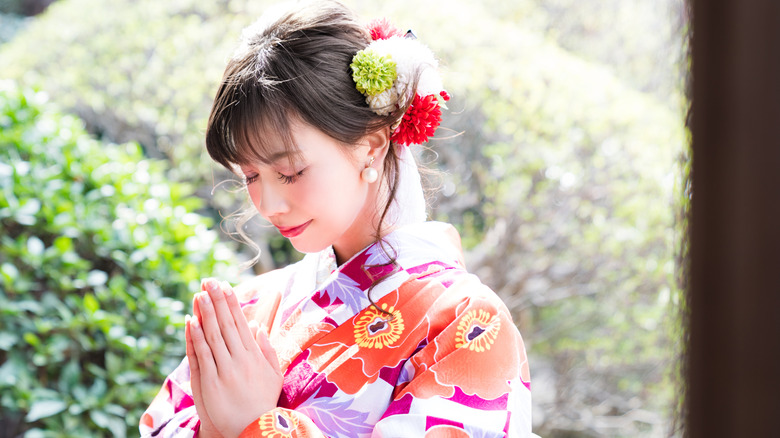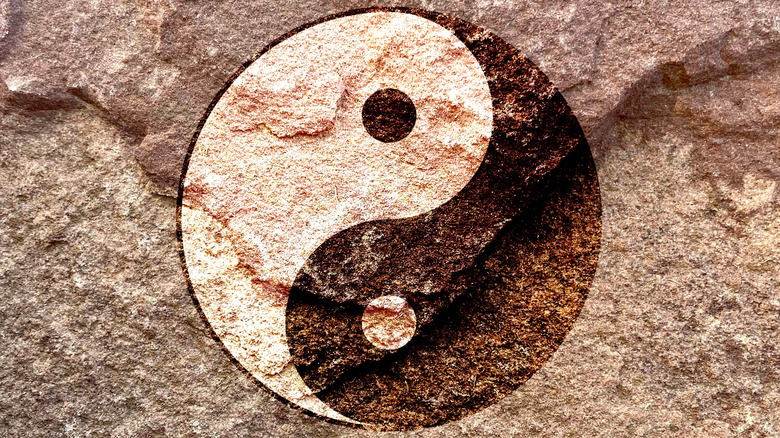How Different Religions Describe Hell
Many religions have a view on the afterlife that includes a dark side. Yet there are boundless misconceptions of what different religions say about hell, with sometimes wildly varying views between different denominations and belief systems. It's rare to find a consensus, with some worshippers having abandoned belief in it altogether.
Is hell a destructive idea designed to control people through fear, as claimed by author Rob Bell in "Love Wins," or does it provide that sense of justice and closure so often lacking in the physical world? If so, is it a life sentence or a place that can be escaped through good works? Does fear of divine retribution serve as a prompt to get people to act more ethically? Or does it completely go against the view of a deity that many religions teach is just and loving?
Other religious believers see the ideas and images around hell as merely describing, as stated in the journal Educational Philosophy and Theory, something beyond words, suggesting that hell is a concept rather than a physical place. For adherents of Shintoism, it is where the dead do little more than exist, surrounded by shadows (as explained on Tofugu), while some versions of Buddhism teach that it is a temporary place of pain that helps us gain redemption and release from an endless cycle of death and rebirth (via the Guardian).
Here are some of the most prominent threads of belief within the world's major religions around this most contentious of subjects: hell.
Ancient religions
The idea of a realm of eternal punishment was drawn initially from Egyptian mythology from the 4th Millennium B.C. onwards, as explained by writer Peter Stanford (via the BBC). Hell, or "Duat," was seen as a place that enfolds the earth, overseen by a jackal-headed deity, Anubis. The process to get to the point of judgment was lengthy and arduous, with the dead having to cross through 12 regions of hell and a plethora of fire-breathing snakes and demons before reaching the point of judgment — that is, if they survived. Those who didn't could be destroyed and confined to annihilation with no hope of redemption (via Ancient Origins).
As highlighted by Stanford, from this point they had to undergo a ritual that sees their souls weighed on a set of scales against the weight of a feather, with the outcome determining whether their lives have been righteous or bad. The heavy-hearted wicked saw their main organ torn to shreds by demons while the good were sent to the "Abode of Bliss."
According to Britannica, Greek mythology described the afterlife as the underworld, known as Hades, a labyrinthine place of darkness and despair guarded by the formidable dog Cerberus. However people could sometimes travel there merely as observers, or be rescued from it. Roman mythology depicted the souls of the dead venturing across the River Styx, with the wicked going to the torture fields of Tartarus instead of the paradise of the Elysian Fields, the destination of the righteous.
Christianity
Despite popular belief, much of the traditional Christian imagery around hell, including fire, demons and a pitchfork-wielding Satan, does not come from the Bible. Although the Book of Revelation contains references to a lake of fire, according to writer Peter Laws the majority of widespread conceptions of hell come from medieval literature like Dante's "Inferno," John Milton's "Paradise Lost," and later artists like Hieronymous Bosch and Michelangelo.
The New Testament contains few references to hell in this sense. Conservative Christians such as theologian Daniel Strange (via the BBC) say that Jesus' mention of Gehenna, a physical place outside Jerusalem where child sacrifices occurred and fires were forever burning, refers to a place in the afterlife where the wicked ultimately go, including those who have rejected Christ.
Christians are therefore divided on whether or not hell is a real place or whether Jesus' primary focus was on the importance of people's lives on earth. The Conversation outlines how liberal Christians tend to describe hell as a state of mind representing alienation from God, brought about by people exercising their divinely mandated free will and choosing to turn away from heaven. However, the possibility of reunion with God is always there, with hell being a place of reform rather than one of unending punishment.
The Conversation further explores how this idea is taken even further by Catholics, who describe Purgatory as a place where those not deemed sinful enough for hell undertake penance until their sins have been atoned for, eventually going on to enter heaven.
Universalism
Many progressive Christians, and some denominations with Christian roots such Unitarians and Universalists, say hell is nonexistent and that all will ultimately enter heaven. The Christian History Institute states that the 19th century Unitarian minister Henry Giles believed emphatically that "there is no room in the same universe for a good God and an eternal hell." This is rooted more widely in the Unitarian belief that the soul does not carry an innate sense of immortality after death, and that instead of retribution, mankind will be delivered to a new form of heaven, on an earth redeemed and restored to its full glory.
Authors such as the former evangelical pastor Rob Bell have argued that God is not a monster and would rather eventually draw everyone into the eternal kingdom. Instead of being a physical place of suffering and punishment, hell is merely a construct by humans.
This perspective draws on ideas from the philosopher Origen, who, according to writer Jerry Walls, states that people have freely sinned but that the unlimited nature of God's beneficence means that no one is exempt from it. As a result, everyone will eventually experience divine restoration.
Judaism -- the Torah
According to Haaretz, there is little agreement within Jewish theology on hell and the afterlife. Many Jews do not hold firm beliefs about what happens after death, while some insist that hell does not exist. However various sacred texts in Judaism do refer to hell as a realm of penance and punishment. Jewish scholars refer to the Torah's mention of Sheol, a place of judgment, darkness and shadows (called refa'im), where the wicked reside.
However this perspective provides hope that hell is not eternal. Passages from Samuel and Ezekiel refer respectively to a day when the Lord will "bringeth up" bodies from the grave and when the "dry bones" of the dead will grow flesh and skin again upon God's command. Anyone who dies for the glory of God's name must get their reward, which means all righteous beings will be given new life at the end of time when he raises people from the dead. Those who would not experience bodily resurrection included Jews who were not attentive to the Torah, branded as doomed heretics.
Jewish scholarship in the Middle Ages built on this by claiming that the souls of the deceased would wait in stasis until God came to judgment, when the good would see their souls and bodies reunited in paradise, while the unrighteous would be sent to Sheol.
Judaism -- the Talmud
The Talmud, the Jewish book of law, refers to an afterlife that sees all but the most wicked being sent to a place of fire and agony where people are temporarily burned and purged before being taken to heaven by Abraham (via Haaretz). Elsewhere the text describes how instead of going to heaven, people wink out of existence once their sins are expiated. The Talmud's descriptions of hell depict a place called Gehinnom, as per My Jewish Learning, where the soul spends 12 months being cleansed before it is released to Olam Ha-Ba, or the world to come. The irredeemably wicked are either sentenced to damnation or dissipate into nothing.
Furthermore, the Talmud talks of a future where the dead are brought back to life, as well as describing them being brought to Gan Eden, a place of equality and justice where they enjoy an exalted position in the presence of the divine. One significant Talmudic story refers to Rabbi Joseph's vision of a heaven in which "those who are on top here were below there," upon which he is told that he has seen "a corrected world."
Islam
The major schools of Islamic scholarship about the afterlife promote the idea that human beings will one day face judgment when Allah brings everyone before him (as explained in Britannica). At this point the dead will be raised, sinners will face the torment of being thrown into the fire when crossing the divine bridge, and the righteous will be sent to paradise. The edict is meant to reassure believers of what awaits them if they stick to the path of purity, while simultaneously warning them of what can happen if they stray from the morally upright route through life.
The journey after death to either the heavenly or hellish realm echoes the teachings of the more ancient religion of Zoroastrianism, in that the divine bridge that the dead are required to cross will widen for the good and contract for the bad, who will eventually lose their footing and be thrown into the flames below. Although God predetermines every human destiny, he also holds individuals responsible for their actions. His judgment is meant to be final, but he can exercise mercy if Muhammad intervenes.
As the Raiyan Foundation notes, in Islam, hell has seven gates, each reserved for a specific group of sinners based on their misdeeds in life. The doors will be locked with a bolt of iron to intensify the pain and heat.
Hinduism
Hinduism teaches that rather than being a place of permanent torment, hell is a realm made up of what many scriptures claim is 28 layers, where individuals atone for crimes in a previous life before moving on, according to "Hinduism and Tribal Religions." It is known as "Naraka" or "Yamaloka," and it is overseen by Yama, the God of Death. Before passing into it, the souls of the deceased are judged by Yama in his court on their actions in life, with the virtuous being sent to heaven, or Svarga, while the less virtuous are sent to one of the layers of hell.
As described by Peter Laws, these layers contain some exacting and fairly unpleasant characteristics — the sinful can expect to end up in places where they suffer from violent diarrhea or be tormented by red-hot iron balls. As the Puranic Encyclopedia outlines, others contain punishments that include the blinding of sinners, their starvation and beating, the crushing of sinners with sugar canes to remove their juice, and roasting them alive in boiling oil. The different categories of sin that can lead to such punishments include heresy, disrespecting one's elders, stealing a man's wealth and family, and cooking birds and other animals alive.
Humans go through cycles of death and rebirth after this purging, as highlighted by the BBC, being reborn as "lower" or "higher" forms until they eventually reach heaven or "Moksha," which means relief from this process of ongoing reincarnation.
Buddhism
Buddhism teaches that there are six realms of existence, one of which is a realm that acts like hell. Within this there are eight hells, with some Buddhist scriptures claiming that 16 sub-hells exist within them. As described by the Guardian, the Pali Canon (the ancient Buddhist scriptures) provides a detailed breakdown, depicting these hells as places where souls are sliced, frozen, burned, and devoured alive, before being brought back to life to go through the same torments all over again. According to Tofugu, these various subdivisions of the inferno have colorful, Game of Thrones-esque names like the Iron Mortar, Pus and Blood, the Flaming Cock, the Freezing Ice, and the Grinder.
Despite its reputation among many people in the West as being a peaceable religion and one lacking gods or an afterlife, this conception of hell portrayed by certain strands of Buddhism is an undeniable place of torment and suffering — yet it is a temporary one, with every rebirth eventually leading back to the deceased becoming human again. No divine being or presence decides on this — only actions or attitudes do. However, time spent in this hell, although temporary, can still last for millions of years.
Zoroastrianism
In death, Zoroastrianism teaches that people pass over the Chinvat Bridge, or "bridge of the decision." Scholarship from the British Library has shown how within this mythology, the souls of all the deceased are required to cross so as to move on to the next stage of existence. The righteous are met by a beautiful woman who will guide them over a gradually widening pathway to paradise. Those who have been bad cross a narrowing bridge that sees them plunge into a void below, encountering a hag-like woman on the way. The story is based on the actions of a righteous man named Viraz who is said to have traveled to the land of the dead and returned with vivid descriptions of what awaited people after death.
Paradise is depicted in Zoroastrian mythology as a place of peace and happiness, where the virtuous sit in tranquil surroundings full of fishes and birds, accompanied by song. To be admitted, people need to have performed worthwhile deeds such as killing creatures like snakes, ants and scorpions.
By contrast, those who end up in hell are punished by demonic animals in ways that match their deeds during their mortal lives. Those who are glutinous and do not feed the poor are starved until they feast on their own limbs, while a man who killed a devout Zoroastrian would have his skin slowly peeled off.
Shintoism
Followers of Shintoism believe in "Yomi," a world of the dead that lacks any reference to fire, torture, or punishment, according to Tofugu. However it is still considered dark, sullied, and lacking in purity. It echoes a central belief of Shintoism, which is that anything to do with death is dirty and contaminated.
Yomi is one of three realms of existence (the other two being the realm of heaven and the realm of earth), and it is overseen by the creator deity Izanami. She ended up in Yomi after one of the gods, Izanagi, tried to release her from the world of Yomi after she died. Although she gave him permission to do so as long as he did not look at her, Izanagi broke his promise to Izanami and lit a fire so as to gaze upon her while she was sleeping. When he saw how decaying and putrified her flesh had become, he is said to have fled in terror.
As retribution for his treachery, Izanami sent a slew of hags and thunder gods in his wake before running after him herself. Izanagi sealed her into hell with a boulder. She told him that she would kill 1,000 people per day in revenge, to which he responded by saying he would grant life to 150,000 people each day — a tale that according to Shintoism illustrates how people end up in Yomi.
Taoism
According to "Eastern Religion for Western Gnostics," by Michael Faust, Taoism has historically had little focus on the afterlife, teaching that death is part of the natural ebb and flow of existence and that the soul goes back to the Tao, where it merges with and separates from other souls in an ongoing process of decline and rebirth.
Each person contains within them two aspects — the earth-bound "p'o" and the spirit-bound "hun" — which separate from each in death when the human personality evaporates, with each returning to their original source. When this happens, the hun is reborn.
Later versions of Taoism embraced Buddhist beliefs such as Diyu, a hellish place where a soul makes amends before rejoining the process of reincarnation. While the punishments in Diyu echo teachings about hell in Abrahamic mythology, souls that go there are not given a life sentence. Eventually they will be incorporated into the trajectory of reincarnation once their sins have been atoned for. Taoism teaches that everyone, even the most degenerate, will eventually find new life.
Some Taoists believe that full transcendence and eternal life can be achieved by efforts to bring together the body's elements of earth, spirit, and energy — a process leading to complete harmony and fulfillment.
